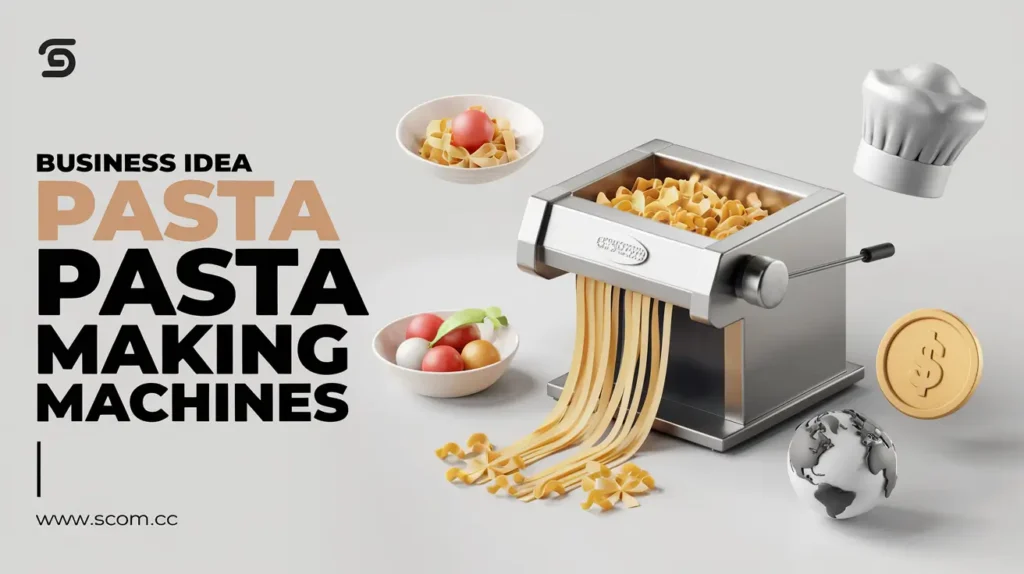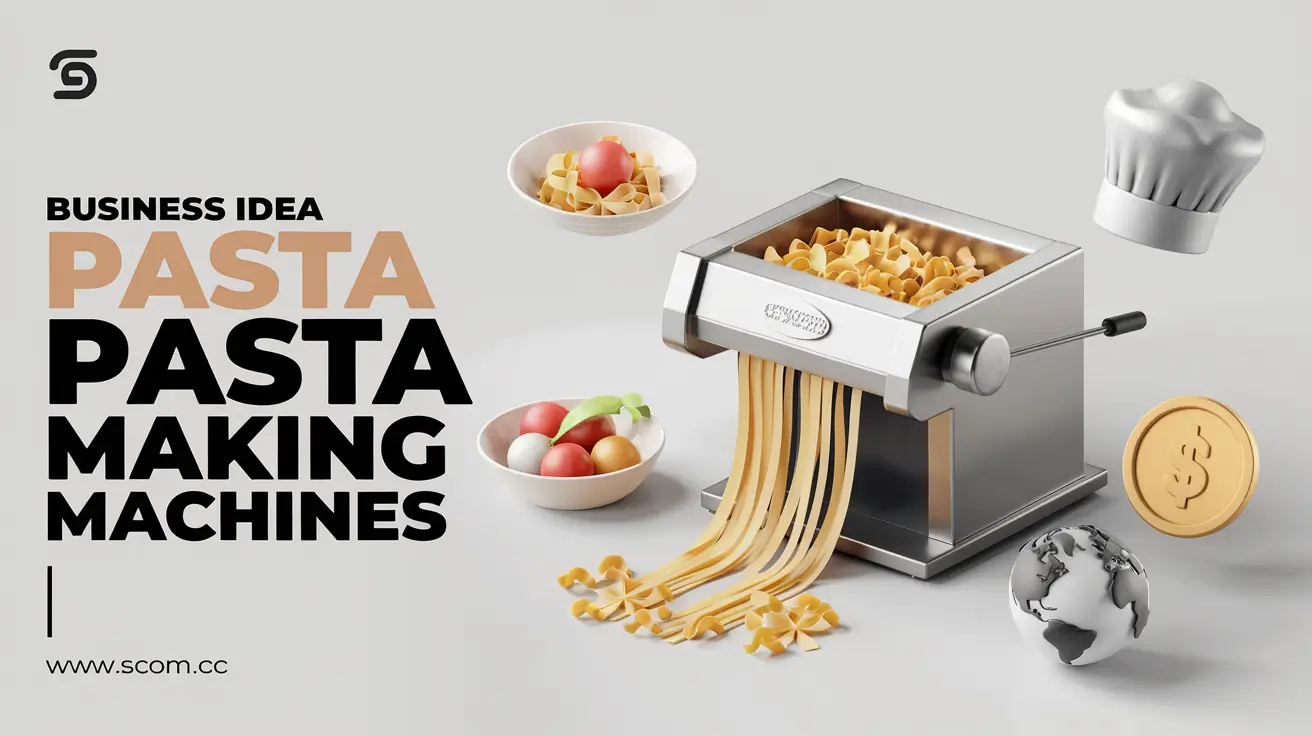Business idea Pasta Making Machines

- Business idea Pasta Making Machines: A Comprehensive Guide
- Introduction to Pasta Making Machines
- What Are Pasta Making Machines?
- Market Potential for Pasta Making Machines
- Initial Costs and Investment
- Benefits of Pasta Making Machines
- Challenges and Considerations
- Legal and Regulatory Aspects
- Marketing and Placement Strategies
- Future Trends and Innovations
- Conclusion
- Summary Table
-
FAQ
- What are pasta making machines?
- Where are the best markets for these machines?
- What are the initial costs for a pasta making machine?
- What are the main benefits of using pasta making machines?
- What challenges might businesses face with these machines?
- What legal and regulatory aspects should be considered?
- How can businesses effectively market pasta making machines?
Business idea Pasta Making Machines: A Comprehensive Guide
Introduction to Pasta Making Machines
Pasta making machines are revolutionising the culinary world by automating the production of fresh pasta. These machines streamline the pasta-making process, allowing for the creation of unique and artisanal pasta varieties. By incorporating various ingredients and customising shapes, businesses can cater to gourmet markets and fresh food enthusiasts. This guide explores the concept of pasta making machines, their market potential, initial costs, benefits, and considerations for successful implementation.
What Are Pasta Making Machines?
Pasta making machines are specialized devices designed to automate the production of fresh pasta. They handle the entire pasta-making process, from mixing and kneading the dough to shaping and cutting the pasta into various forms. These machines enable businesses to produce high-quality pasta with consistent texture and flavour, offering a significant advantage in the competitive food industry.
Key Features
- Automated Production: Handles dough preparation, mixing, and shaping.
- Customisable Shapes: Allows for a variety of pasta shapes and sizes.
- Ingredient Integration: Supports the addition of unique ingredients for custom flavours.
- Ease of Use: Simplifies the pasta-making process, reducing manual effort and skill requirements.
Market Potential for Pasta Making Machines
The market for pasta making machines is growing, driven by the increasing demand for fresh and artisanal pasta. These machines are particularly appealing to gourmet food markets, restaurants, and specialty food retailers.
Target Markets
- Gourmet Restaurants: Use machines to offer high-quality, fresh pasta with unique flavours.
- Specialty Food Stores: Provide artisanal pasta varieties to attract discerning customers.
- Fresh Food Markets: Cater to consumers seeking freshly made, high-quality pasta.
- Home Chefs and Small Producers: Enable individuals and small businesses to create and sell fresh pasta.
Initial Costs and Investment
Starting a pasta-making business involves several initial costs, including purchasing the machine, setting up the production space, and sourcing ingredients. Understanding these costs is essential for financial planning and budgeting.
Cost Breakdown
- Machine Purchase: Prices start from around $300, with more advanced models costing up to $3,000.
- Setup and Installation: Includes modifications to the workspace and any necessary equipment.
- Ingredients: Costs for flour, eggs, and other components used in pasta production.
- Maintenance: Regular upkeep to ensure the machine operates efficiently.
Benefits of Pasta Making Machines
Pasta making machines offer numerous benefits, making them a valuable investment for businesses looking to produce fresh, high-quality pasta. These benefits include enhanced efficiency, consistent quality, and the ability to offer unique pasta varieties.
Advantages
- Increased Efficiency: Speeds up the pasta-making process, allowing for higher production volumes.
- Consistent Quality: Ensures uniform texture and flavour in every batch of pasta.
- Product Customisation: Allows for the creation of unique pasta shapes and flavours.
- Reduced Labor Costs: Minimizes the need for manual preparation and skilled labour.
Challenges and Considerations
While pasta making machines provide many advantages, businesses must also address several challenges. Proper planning and management are crucial for overcoming these obstacles.
Common Challenges
- Learning Curve: Requires time to master the operation and settings of the machine.
- Maintenance Requirements: Regular cleaning and servicing are necessary to maintain performance.
- Initial Investment: The upfront cost of purchasing the machine and setting up the production space.
- Space Constraints: Adequate space is needed for the machine and ingredient storage.
Legal and Regulatory Aspects
Operating a pasta making machine involves compliance with various legal and regulatory requirements. These regulations ensure food safety and adherence to industry standards.
Key Regulations
- Health and Safety: Compliance with food safety standards for ingredient handling and pasta production.
- Equipment Certification: Ensuring the machine meets industry standards and regulations.
- Licensing: Obtaining necessary permits for operating in a commercial kitchen environment.
Marketing and Placement Strategies
Effective marketing and strategic placement of pasta making machines can enhance their impact and profitability. Businesses should consider how to leverage these machines to attract and retain customers.
Marketing Tips
- Highlight Freshness: Emphasize the advantage of fresh pasta in marketing materials.
- Showcase Variety: Display different pasta shapes and flavours to attract interest.
- Promote Customisation: Highlight the ability to create unique and artisanal pasta.
- Leverage Local Markets: Participate in local food fairs and farmers' markets to increase visibility.
Future Trends and Innovations
The pasta making machine industry is evolving, with new trends and innovations shaping its future. Staying informed about these developments can provide businesses with a competitive edge.
Emerging Trends
- Smart Technology: Integration of IoT for remote monitoring and management.
- Customisation Options: Machines offering programmable settings for various pasta types.
- Sustainable Practices: Adoption of eco-friendly materials and energy-efficient technologies.
- Advanced Design Features: Enhanced precision and versatility for creating complex pasta shapes.
Conclusion
Pasta making machines offer a valuable opportunity for businesses to produce fresh, high-quality pasta with efficiency and consistency. By understanding the market potential, managing costs, and addressing challenges, entrepreneurs can successfully implement these machines to enhance their product offerings and cater to a growing demand for artisanal pasta.
Summary Table
| Aspect | Details |
|---|---|
| Product | Automated machines for producing fresh pasta |
| Key Features | Automated production, customisable shapes, ingredient integration, ease of use |
| Target Markets | Gourmet restaurants, specialty food stores, fresh food markets, home chefs, small producers |
| Initial Costs | $300 to $3,000 per machine, plus setup, ingredients, and maintenance |
| Benefits | Increased efficiency, consistent quality, product customisation, reduced labor costs |
| Challenges | Learning curve, maintenance requirements, initial investment, space constraints |
| Legal Requirements | Health and safety standards, equipment certification, licensing |
| Marketing Strategies | Highlight freshness, showcase variety, promote customisation, leverage local markets |
| Future Trends | Smart technology, customisation options, sustainable practices, advanced design features |
FAQ
What are pasta making machines?
Pasta making machines are automated devices that handle the production of fresh pasta, including mixing dough, shaping, and cutting.
Where are the best markets for these machines?
Ideal markets include gourmet restaurants, specialty food stores, fresh food markets, and home chefs or small producers seeking to create artisanal pasta.
What are the initial costs for a pasta making machine?
Initial costs start from around $300, with more advanced models costing up to $3,000, plus expenses for setup, ingredients, and maintenance.
What are the main benefits of using pasta making machines?
Benefits include increased efficiency, consistent quality, the ability to create custom pasta shapes and flavours, and reduced labor costs.
What challenges might businesses face with these machines?
Challenges include the learning curve for operating the machine, regular maintenance needs, significant initial investment, and space constraints.
What legal and regulatory aspects should be considered?
Businesses must comply with food safety standards, ensure equipment certification, and obtain necessary licenses for operating in a commercial kitchen environment.
How can businesses effectively market pasta making machines?
Effective marketing strategies include highlighting the freshness of the pasta, showcasing different shapes and flavours, promoting customisation options, and participating in local food events.

If you enjoyed this article and found it valuable, we encourage you to explore our news and valuable information section, where you'll find more relevant and up-to-date content that may pique your interest. Additionally, if you are seeking advice or need guidance on a specific topic, we suggest visiting our services section. There, you will find a variety of options designed to assist and support you in addressing your needs. Feel free to check out both sections to get the information and assistance that best suits your requirements.

Leave a Reply